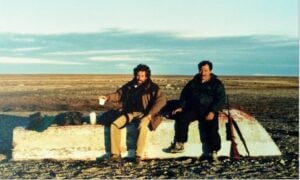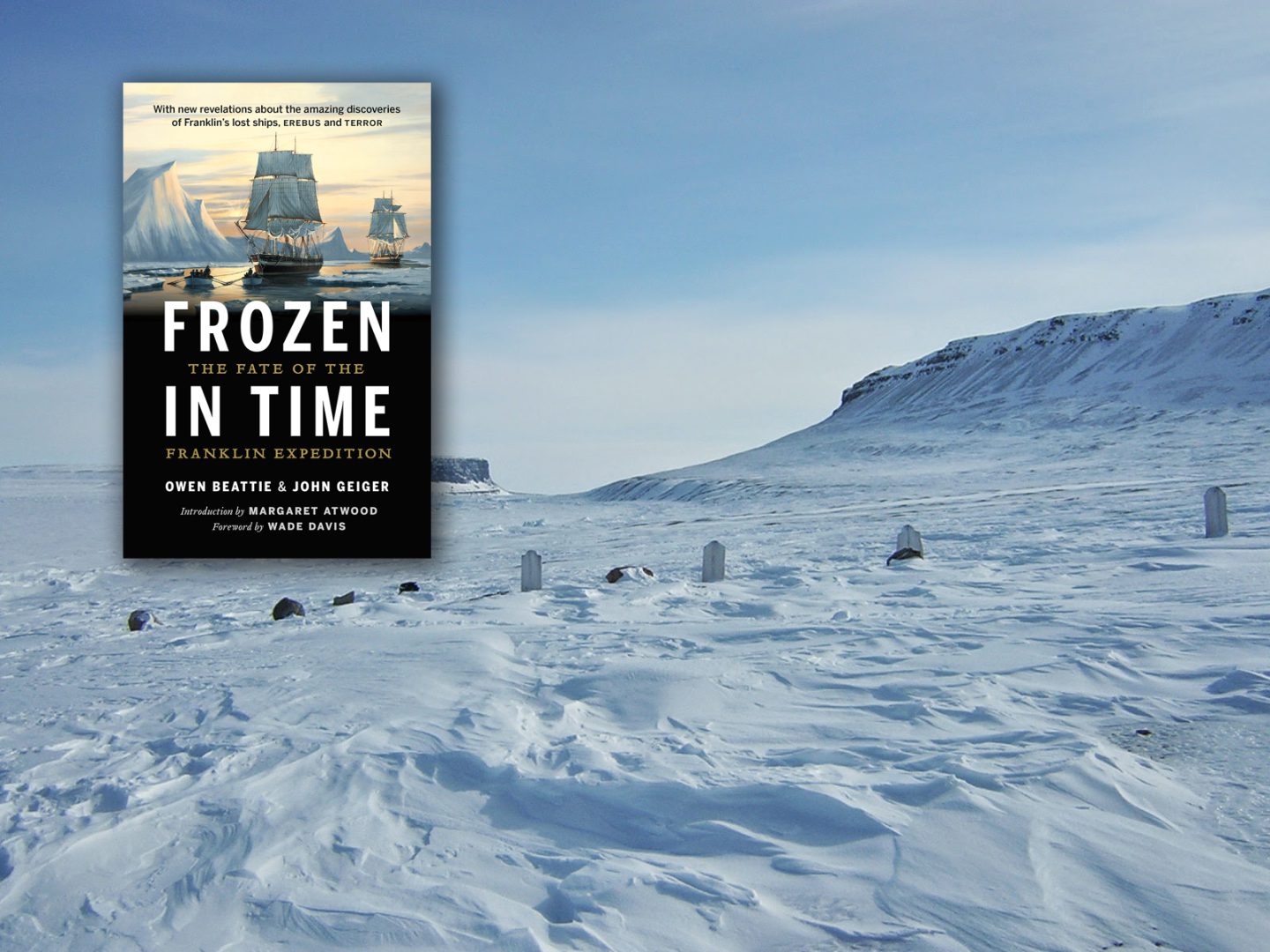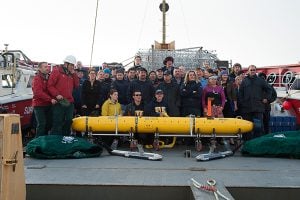When the first images of the face of John Torrington appeared in newspapers and magazines in 1984, it awoke a curiosity felt around the world: how could a man buried nearly 140 years ago seem so … alive? We looked into his eyes, and he almost seemed to look back; his visage inspired a James Taylor song (“The Frozen Man”), and he became the longest-dead person to be ranked among People Magazine’s “Most Intriguing People of the Year.”
But what was the meaning of this man’s uncanny return from the past? Answers would have to wait, first until 1986 when Torrington’s shipmates were exhumed and autopsied, and then until 1987, when Owen Beattie and John Geiger’s book Frozen in Time was published. Beattie, the anthropologist in charge of the exhumations, provided scientific context, but it was Geiger who helped us make sense of it all. His descriptions of the scene, and his account of the later chemical analyses that pegged lead poisoning as a key factor in the demise of Franklin’s men, made a compelling case that lead from the tinned food was the ultimate cause of the Franklin expedition’s demise.
Since then, of course, we’ve learned a good deal more, and recent research on the lead issue has rendered a more complex verdict. We now know that the baseline lead levels for people of this era were higher than we’d realized, and that levels varied quite widely among Franklin expedition members. Lead is still a central part of the story, but scurvy, tuberculosis, and simple exhaustion have come into play as aggravating factors. But whatever the ultimate scientific verdict, Beattie and Geiger’s account of these three sailors — Torrington, Hartnell, and Braine — remains a definitive one.
The 30th anniversary edition of Frozen in Time includes an afterword which brings the story up to date, both with Dr. Beattie’s more recent research as well as the discovery of HMS Erebus (in 2014) and HMS Terror (in 2016), news of which has renewed worldwide interest in the Franklin mystery. These ships, in time, will disclose many of their secrets, and will expand and complicate our understanding of the expedition’s accomplishments, and the reasons for its demise. Ongoing research using DNA recovered from the remains may yet identify more of Franklin’s men, and yet it will always be these first three who loom largest in our imaginations. I’ve visited their graves at Beechey Island many times now, but the thrill of standing beside them has never diminished. For 30 years, their story, as recounted so eloquently in this book, has been a touchstone for all who have been drawn to the Franklin mystery — and it will doubtless remain so for many years to come.
Russell Potter is an American writer and college professor with a special interest in the history of British exploration of the Arctic, and himself the author of a book on the Franklin expedition, Finding Franklin.
He is also the editor of the Arctic Book Review.




